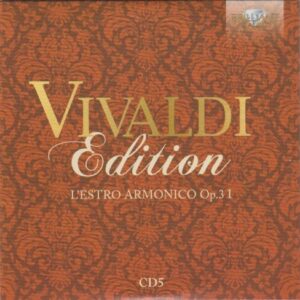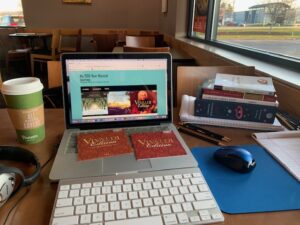 Back at Panera in my usual spot by the windows (I like to think of it as my table), sipping a Light Roast coffee with cinnamon. (That is to say, the cinnamon is in my coffee; I’m not sipping Light Roast coffee with a person named Cinnamon.)
Back at Panera in my usual spot by the windows (I like to think of it as my table), sipping a Light Roast coffee with cinnamon. (That is to say, the cinnamon is in my coffee; I’m not sipping Light Roast coffee with a person named Cinnamon.)
I’m watching the sun rise, feeling its warmth on the right side of my face, which is the side closest to the window, and I’m thinking life is good.
Which is always a bad sign.
In a TV show, whenever one detective turns to the other one and says, “I only have two weeks left before retirement. Then, the wife and I are going to take it easy, maybe do a little traveling. We’ve been looking forward to this for a long, long time” you can bet your keister that the detective expressing himself will catch a bullet before the first commercial.
 So, I’d better keep my joy a secret.
So, I’d better keep my joy a secret.
This is new music. It’s no longer violin sonatas. Now, it’s something called L’estro Armonico concertos. Part of the fun of doing these projects is learning about the various types of music, as well as the word for them.
So, while I read a bit of theology, I’ll let Vivaldi play in the background. When something really jumps out at me, I’ll make note of it.
Just the Facts
The performances on this CD were recorded November 28-30, 2013, at Villa San Fermo, Lonigo, Italy.
CD 5 has 20 tracks that have a total running time of 46:57.
L’arte dell’Arco is t he troup playing, with Federico Guglielmo handling the role of solo violin & concertmaster.
Most of the other musicians, with three exceptions (Francesco Galligioni, Michele Pasotti, and Roberto Loreggian), are new to me. These musicians are:
Elisa Citterio, violin
Rosella Croce, violin
Esther Crazzolara, violin
Enrico Balboni, viola
Davide Zaltron, viola
Paolo Zuccheri, violone/double bass
Now, as to what these performances are called (“L’estro Armonico concertos”), I found an entry on Wikipedia that tells me what I’m listening to.
L’estro armonico (The Harmonic Inspiration), Op. 3, is a set of 12 concertos for string instruments by Italian composer Antonio Vivaldi, first published in Amsterdam in 1711. Vivaldi’s Twelve Trio Sonatas, Op. 1, and Twelve Violin Sonatas, Op. 2, only contained sonatas, thus L’estro armonico was his first collection of concertos appearing in print. It was also the first time he chose a foreign publisher, Estienne Roger, instead of an Italian. Each concerto was printed in eight parts: four violins, two violas, cello and continuo. The continuo part was printed as a figured bass for violone and harpsichord.
The concertos belong to the concerto a 7 format, that is: for each concerto there are seven independent parts…
Vivaldi composed a few concertos specifically for L’estro armonico, while other concertos of the set had been composed at an earlier date. Vivaldi scholar Michael Talbot described the set as “perhaps the most influential collection of instrumental music to appear during the whole of the eighteenth century”.
By the way, another word I was unfamiliar with was violone. I’d never heard of that instrument. But, as luck would have it, Wikipedia offers an entry on that, too. I left the link above for easy access to the Wiki article.
This recording is marked DDD, which means it is an all-digital recording. (Digitally recorded, Digitally mixed, and Digitally mastered.) Purists, those folks who think vinyl sounds better than CDs (they’re wrong) would probably look askance at this recording. To my ears, this is the best way to record music to precisely capture every note. But what do I know?
Just the Feelings
Recording quality: 5
Overall musicianship/vocals: 5
CD liner notes: 2 (booklet in box set)/5 (pdf download from web site)
How does this make me feel: 3
I listened to this album straight through about three times.
Two things stood out:
- Nothing much particularly stands out, and
- This music is more purposeful, more complex, perhaps less playful than what I heard previously
This music almost sounds like a film score. It has depth and a vibe to it. Or maybe it’s more mature than Vivaldi’s previous music. That could be it. These compositions sound more complete somehow.
One track – that I’m hearing right now – stands out. It’s Track 10: Concerto #7 in A Major for Two Violins, RV 519, Allegro. That’s a very lively piece of music. The dueling violins are a delight.
After listening through 3-4 times, I noticed the same couple of tracks always stood out:
Track 10 and Track 19. There was something very sprightly and fun and joyful about those tracks. The performances are dynamic, nimble, and praiseworthy.
Although I’m not sure I could listen to this CD again (especially after hearing it on repeat all morning long!), I do think a couple of the tracks will find their way into a kind of Vivaldi Greatest Hits CD that I’ll probably make for myself later on.
Despite the lack of what I called “standout” tracks, this was music worth hearing. It was unfamiliar to me – as a genre as well as these recordings – so I learned something, and gained even more appreciation for Vivaldi.
